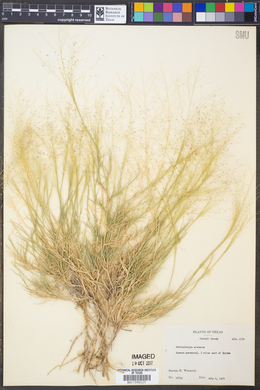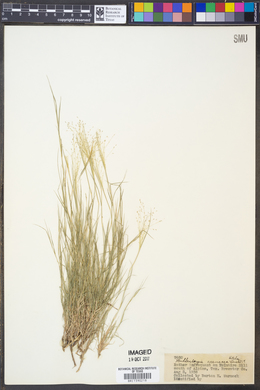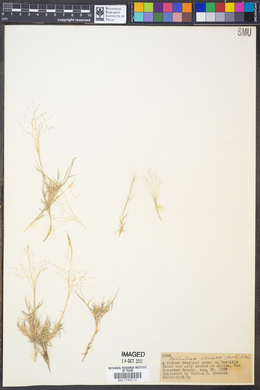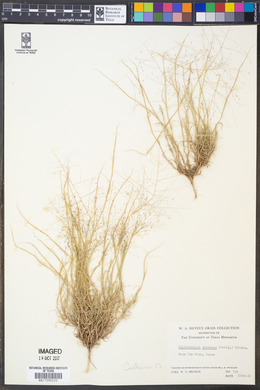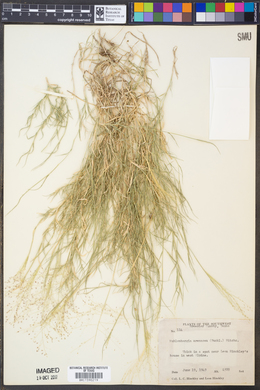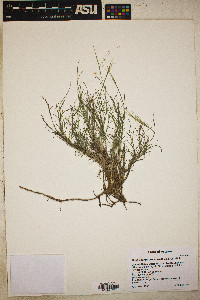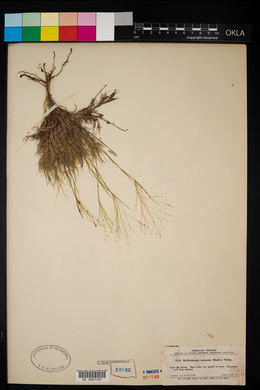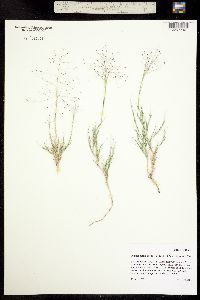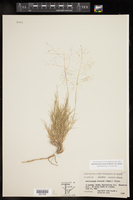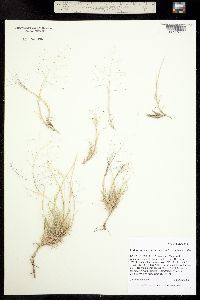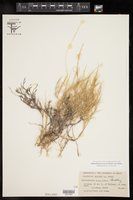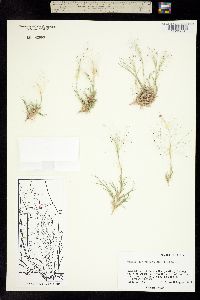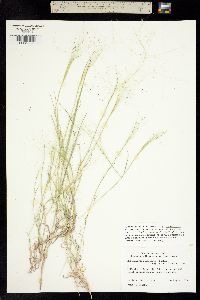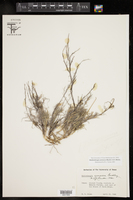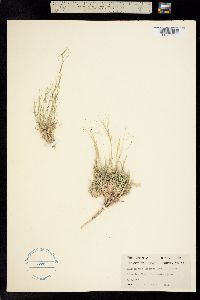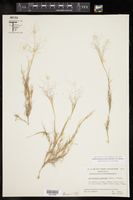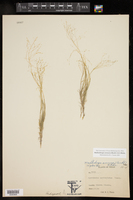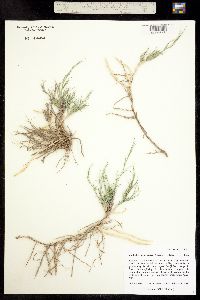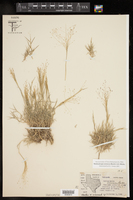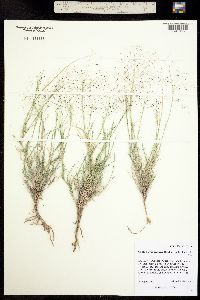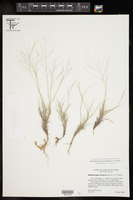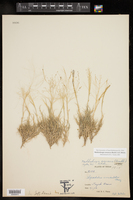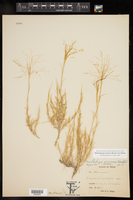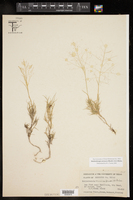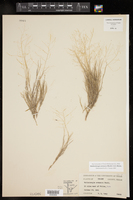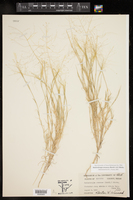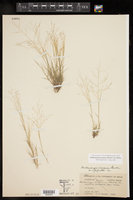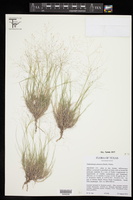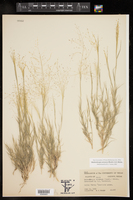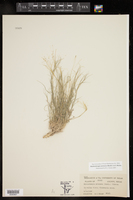Muhlenbergia arenacea
|
|
|
|
Family: Poaceae
ear muhly, more...Eared Muhly
[Sporobolus arenaceus, moreSporobolus asperifolius var. brevifolius Vasey, Sporobolus auriculatus] |
Plants perennial; rhizomatous, not cespitose. Culms 10-30(40) cm, decumbent, terete to somewhat compressed-keeled near the base; internodes scabridulous below the nodes. Sheaths about 1/2 as long as the internodes, margins hyaline; ligules 0.5-2 mm, hyaline, with lateral, 1-2 mm lobes; blades 0.7-4(6) cm long, 0.5-1.7 mm wide, flat, occasionally folded, tapering, scabrous abaxially, strigulose adaxially, margins and midveins thickened, whitish, apices narrow, often sharp. Panicles 5-15 cm long, 4-14 cm wide, broadly ovoid, open; primary branches 2-8 cm, capillary, straight to slightly flexuous, diverging 45-80(100)° from the rachises, never appearing fascicled, naked proximally; pedicels 1-11 mm, usually longer than the spikelets. Spikelets 1.5-2.6 mm, occasionally with 2 florets. Glumes equal, 0.9-2 mm, 1-veined, usually acute to acuminate, occasionally erose and mucronate, mucros to 0.2 mm; lemmas 1.5-2.5 mm, lanceolate to oblong-elliptic, plumbeous to purplish, sparsely appressed-pubescent on the lower 1/2 of the margins and midveins, hairs to 0.3 mm, apices acute to obtuse, sometimes shallowly bilobed, mucronate, mucros to 0.3 mm; paleas 1.5-2.6 mm, lanceolate, glabrous, obtuse to acute; anthers 1-1.5 mm, yellowish to purplish. Caryopses 1-1.3 mm, elliptic, brownish. 2n = unknown. Muhlenbergia arenacea grows in sandy flats, plains, alluvial fans, washes, depressions, and alkaline mesas in open grasslands, at elevations of 1000-2200 m. Its range extends from the southwestern United States into northern Mexico. FNA 2003, Gould 1980 Common Name: ear muhly Duration: Perennial Nativity: Native Lifeform: Graminoid General: Low rhizomatous perennial grass with decumbent stems, 10-30 cm; very leafy below; terete to somewhat compressed-keeled near the base; internodes scabridulous below the nodes. Vegetative: Sheaths about half as long as the internodes, margins hyaline; ligules 0.5-2 mm, hyaline, with lateral, 1-2 mm lobes; blades numerous and short, 0.5-4 cm long, 0.5-2 mm wide, flat, occasionally folded, tapering, fine and soft, but often sharp at the narro Inflorescence: Panicles 5-15 cm long, 4-14 cm wide, broadly ovoid, open; primary branches 2-8 cm, capillary, straight to slightly flexuous, diverging 45-80 degrees from rachises; spikelets awnless or nearly so, occasionally two-flowered, about 2 mm long, on capillary pedicels mostly 4-15 mm long; glumes one-half to three-fourths as long as the lemma; lemmas acute or narrowly rounded at apex, often minutely mucronate. Ecology: Found on open grassy slopes, sandy flats, plains, alluvial fans, washes, depressions and alkaline mesas from 3,500-7,500 ft (1067-2286 m); flowers August-October. Distribution: s AZ, s NM, sw TX; south to c MEX. Notes: Muhlenbergia is a large and diverse genus primarily distinguished by having single-flowered spikelets with unequal glumes. M. arenacea is distinct in being a rhizomotous perennial bunchgrass with open, sparsely-flowered, wispy panicles; lemmas without awns; and leaf blades with white, thickened leaf margins and midveins. Similar to M. asperifolia but with smaller, narrower blades (usually 1 mm or less wide, compared to A. asperifolia with blades 1-3 mm wide). The blades have white margins, are more densely packed along the lower stems, and have pointed, sometimes sharp, tips. Another trait that distinguishes this species from M. asperifolia, but requires a hand lens to see, is the ligule which has 2 longer appendages, one on either side. Ethnobotany: Unknown Etymology: Muhlenbergia is named for Gotthilf Heinrich Ernst Muhlenberg (1753-1815) a clergyman and botanist from Pennsylvania; arenacea come from Latin arena meaning sand. Synonyms: None Editor: SBuckley 2010, FSCoburn 2015, AHazelton 2015 |


